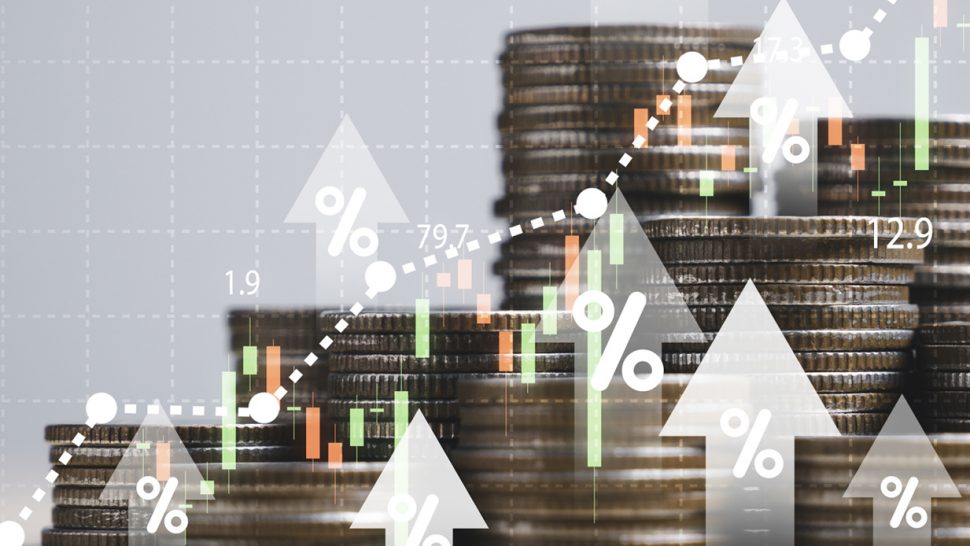Investment Commentary – 4th Quarter 2022

Overview
Perhaps the most surprising thing about equity market returns in the fourth quarter of 2022 is that they were positive. Against a background of higher inflation (in many regions by double-digit percentages), central banks raising interest rates to try to control it, the war in Ukraine dragging on, China’s zero-Covid policy persisting and, at the beginning of the quarter at least, the UK in political crisis, it is not unreasonable to have expected the move to have been the other way.
What triggered this recovery? The merest hint by the Federal Reserve of a softening in the rate of tightening in monetary policy set the hare running. This is despite the fact that interest rates are still to rise, by increments of 0.5% rather than 0.75%, (most central banks made such a move in December). Although central bankers’ rhetoric remains hawkish, US 10-Year Treasury bond yields fell from 4.3% to 3.4%, as bond prices rose, before closing the period at 3.9%. Initially, this inspired sharp upward moves in parts of the equity market worst impacted by the re-evaluation
of growth stocks, such as technology and mid- and small-sized companies. There are some early signs that inflation may have peaked but at levels still way in excess of target – so further interest rate rises should be expected.
The tightening monetary policy is having some impact on economies, as shown by Purchasing Manager Indices. Falling below 50 signals contraction, and in the US the Manufacturing Index (M) closed the year at 46.2 and the Services Index (S) at 44.4. The readings were similar in other regions: 47.8 for M and 49.1 for S in the Eurozone, 49.0 for M and 48.0 for S in China, and 45.3 for M and 49.9 for S in the UK. Recession concerns have led to a retreat in commodity prices, with Brent Crude (Oil) at $84 versus $78 a year ago, Copper at $8,398 versus $9,755, Iron Ore at $115 v $128 and Wheat unchanged at $773. So far the only strong part of economies has been employment, which has not yet started to fall – in part due to a lack of available workers in all regions.
The table of market movements below shows that, while a positive, the quarter rally in no way made up for falls during the rest of the year.
| Index | 30/09/2022 | 31/12/2022 | Q4 Change | 2022 Change |
| CBOE UK 100 | 689 | 747 | 8.4% | 2.0% |
| CBOE UK All Companies | 12,028 | 13,084 | 8.8% | -1.7% |
| CBOE UK 250 | 14,650 | 16,363 | 11.7% | -21.8% |
| MSCI Private Balanced | 1,606 | 1,665 | 3.7% | -10.0% |
| MSCI Private Growth | 1,770 | 1,835 | 3.7% | -7.9% |
Macro-economic picture
Let us turn specifically to the UK market. Coming off a low base in reaction to the Truss/Kwarteng mini-Budget, the leading index rallied strongly (+8.4%), while the mid-cap second-liners did better (+11.7%). The annual return of the top 100 stocks (+2%), as we have explained in previous reports, is distorted by the composition of the index. The biggest companies – AstraZeneca, Shell, Unilever, HSBC, Rio Tinto and BP – have all seen their share prices rise substantially. Oil stocks in particular have excelled, with rises of over 40% in the year. In contrast, 63 constituents saw their share prices fall by more than 5%, with 39 of these down in excess of 20%. This was much more reflective of the falls in the mid-cap (-22%) and smaller-cap (-16%) parts of the market. Indeed, an equally weighted contribution (where each company’s move has the same impact on the index) of the top 100 stocks would have produced a return of -15.8% for the year.
In the rising interest rate environment, housebuilders, retailers and property stocks have suffered the most savage falls. Telecoms – effectively BT and Vodafone – have also struggled. Each sector fell by more than 25%. In addition, a broad measure of the investment trust market declined by 19% as their underlying holdings fell in value and discounts to net asset values widened. The best gains, as can probably be deduced from the paragraph above, came from the oil, mining, pharmaceutical and bank sectors. The bond market – normally a safe haven in an equity storm – provided no support whatsoever, falling by over 25% as the long bull market in bonds came to an end.
Outlook
There are many imponderables in looking to the year ahead. Markets seem to have been discounting a recession for some time – although, technically, it has not arrived yet. It seems likely that the UK economy will have contracted in the fourth quarter – a second successive fall, which is technically defined as recession. Will inflation fall steeply if it has peaked? And, if so, will central banks be easing monetary policy by the end of the year? Can China recover quickly from the surge in cases following the ending of its zero-Covid policy? And how will corporate profits, the ultimate driver of valuations, fare in these conditions?
Notwithstanding the anomalous one-year performance of the top UK 100 share index, developed markets have been in a bear market for over a year. The exact timing of the next upturn is impossible to predict, but bull markets usually begin during a recession. Some valuations look cheap, particularly in the UK, and even bond markets are beginning to offer reasonable returns if one assumes inflation is rolling over. Given the uncertainties around, we expect market volatility to persist, but we continue to favour holding a broadly diversified selection of good-quality shares for the long term. This will ensure we capture any upturn that might occur when markets start to believe peak inflation has been reached. Past experience suggests this could happen when least expected.
January 2023
Fiske plc. Registered office: 100 Wood Street, London, EC2V 7AN
Member of the London Stock Exchange Authorised and Regulated by the Financial Conduct Authority
Registered in England No 02248663 VAT No. 489 1881 31
Disclaimer
This article is a general communication being provided for informational purposes only. It is educational in nature and not designed to be taken as advice or a recommendation for any specific investment product, strategy, plan feature or other purpose in any jurisdiction, nor is it a commitment from Fiske plc to participate in any of the transactions mentioned herein. Any examples used are generic, hypothetical and for illustration purposes only. This material does not contain sufficient information to support an investment decision and it should not be relied upon by you in evaluating the merits of investing in any securities or products. In addition, users should make an independent assessment of the legal, regulatory, tax, credit, and accounting implications and determine, together with their own financial professional, if any investment mentioned herein is believed to be appropriate to their personal goals. Investors should ensure that they obtain all available relevant information before making any investment. Any forecasts, figures, opinions or investment techniques and strategies set out are for information purposes only, based on certain assumptions and current market conditions and are subject to change without prior notice. All information presented herein is considered to be accurate at the time of production, but no warranty of accuracy is given and no liability in respect of any error or omission is accepted. It should be noted that investment involves risks, the value of investments and the income from them may fluctuate in accordance with market conditions and taxation agreements and investors may not get back the full amount invested. Both past performance and yields are not a reliable indicator of current and future results. Fiske plc is authorised and regulated by the Financial Conduct Authority and is a Member of the London Stock Exchange. FCA Register No: 124279.





